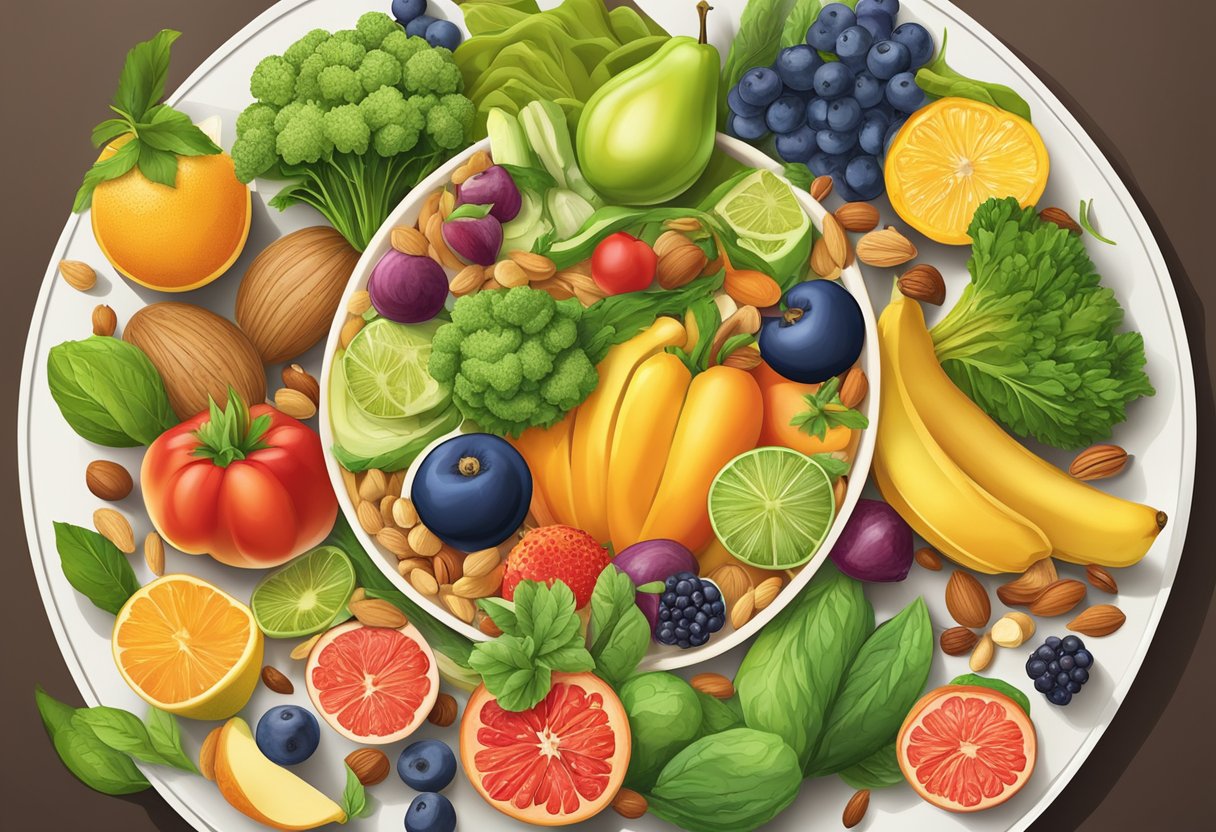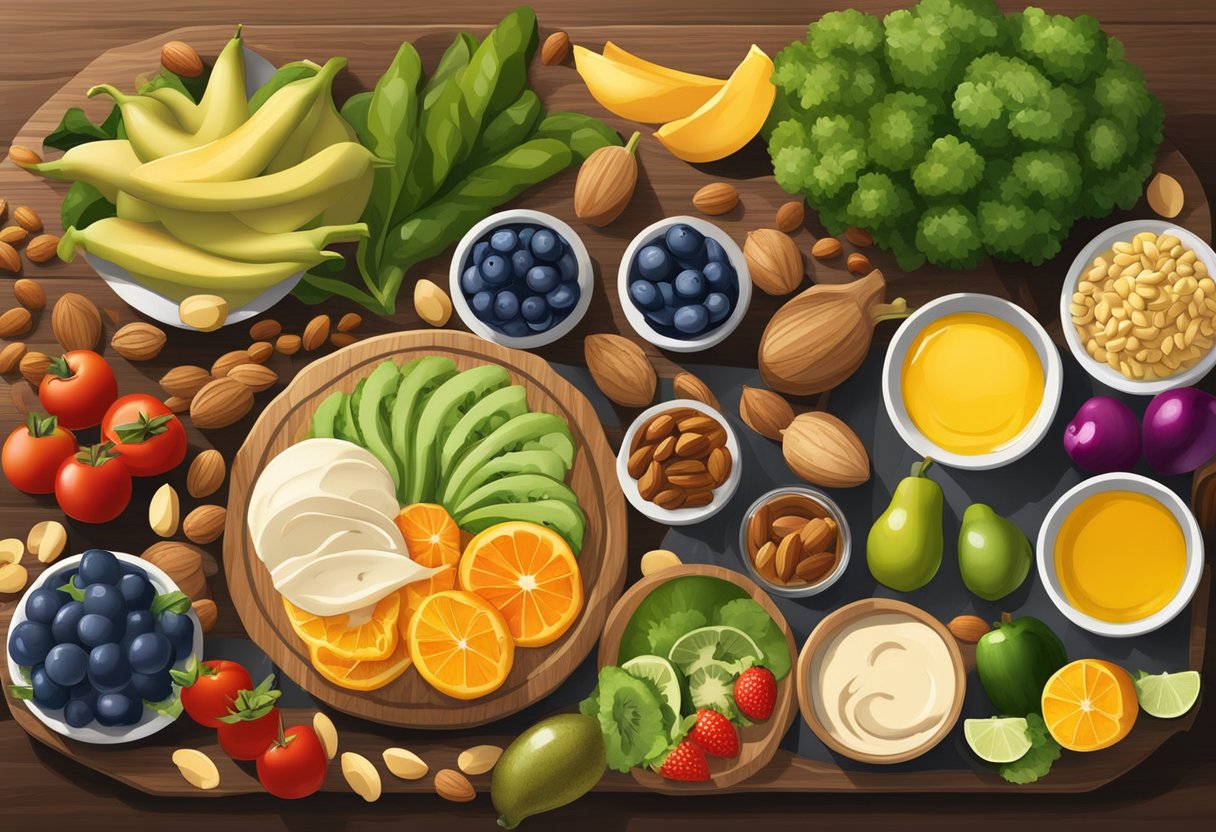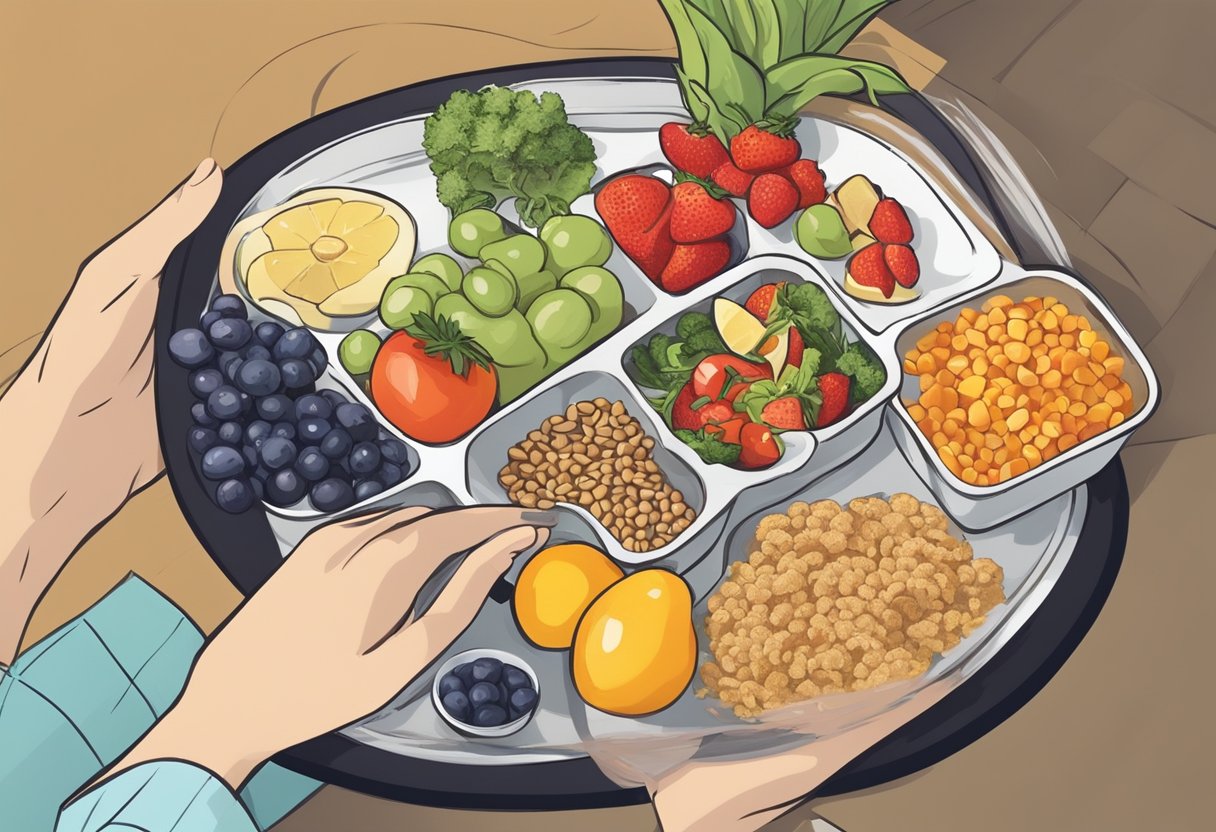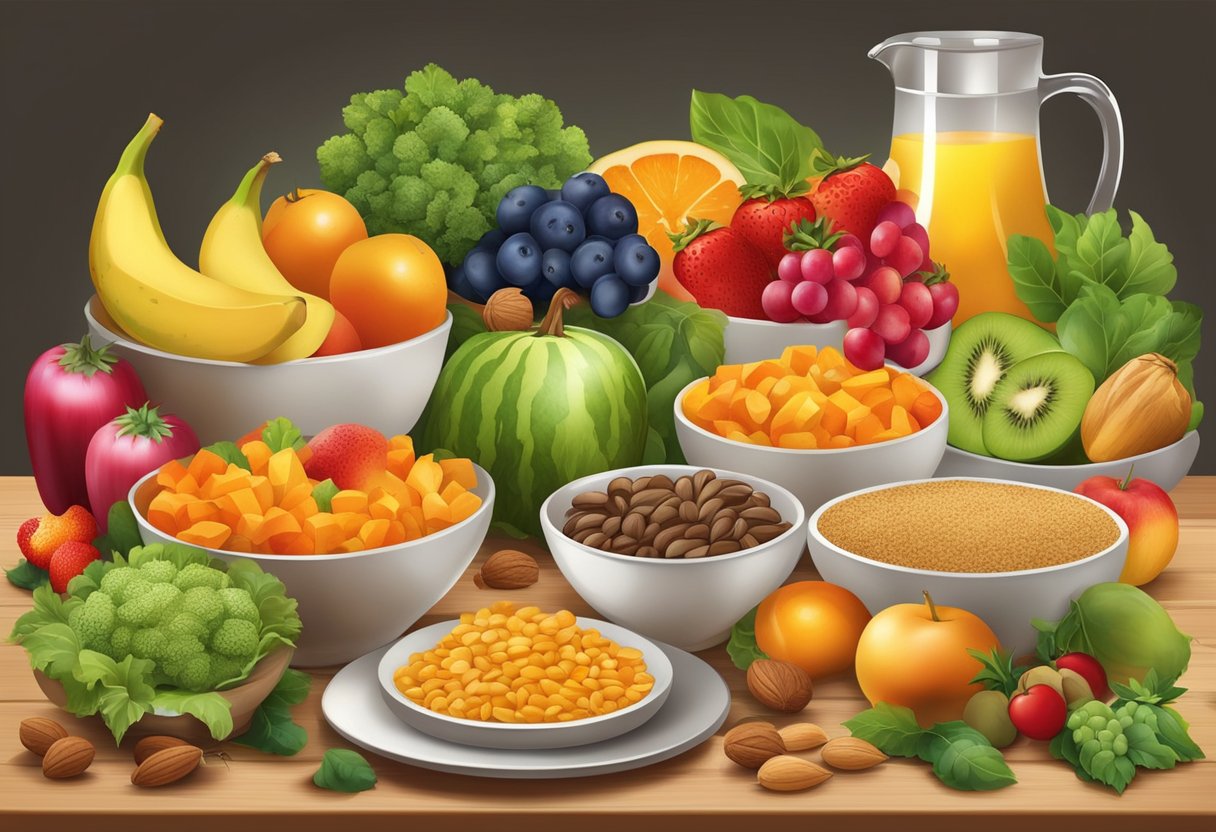Adopting a gluten-free Mediterranean diet presents a unique blend of challenges and rewards, especially when maintaining this lifestyle while on the move. The Mediterranean diet, revered for its numerous health benefits, primarily features a rich variety of fruits, vegetables, legumes, nuts, fish, and olive oil. Tailoring this diet to be gluten-free requires careful selection of whole grains and an awareness of cross-contamination, to safeguard against gluten exposure that can occur in individuals with celiac disease or gluten sensitivity.

For those leading a fast-paced life or who often eat away from home, the key lies in planning and knowledge. Understanding the basic tenets of the diet, learning to identify naturally gluten-free foods, and mastering the art of reading labels empower individuals to make informed choices. With a strategy in place, a balanced and diverse plate that aligns with a gluten-free Mediterranean lifestyle becomes not just achievable but also enjoyable. The aim is to incorporate nutrient-dense foods that support overall health and provide convenience without compromising on dietary requirements.
Key Takeaways
- Planning is essential to maintain a gluten-free Mediterranean diet on the go.
- Knowledge of gluten-free options and reading labels are key for informed food choices.
- A balanced plate is achievable with mindful selection to align with dietary needs.
Table of Contents
Understanding the Gluten-Free Mediterranean Diet

The Mediterranean diet, lauded for its numerous health benefits, meets the specific needs of individuals with celiac disease or gluten sensitivity when adapted to exclude gluten-containing foods.
Core Principles of the Mediterranean Diet
The Mediterranean diet emphasizes a high intake of vegetables, fruits, whole grains, legumes, healthy fats, and water. It encourages a moderate consumption of seafood, poultry, and dairy, while suggesting a low intake of sweets and processed or red meat. The focus is on fresh, whole foods that are minimally processed.
Importance of Gluten-Free for Health
Adhering to a gluten-free diet is essential for those with celiac disease or gluten intolerance, as it involves the strict avoidance of gluten—a protein found in wheat, barley, and rye. Gluten consumption can lead to serious health complications for these individuals, making gluten-free options vital.
Benefits of a Gluten-Free Life
People with celiac disease often experience significant health improvement on a gluten-free diet, reporting fewer digestive problems and an overall increase in energy. The Celiac Disease Foundation underscores the importance of this diet as the primary treatment for managing the disease. Beyond managing symptoms, a gluten-free diet may also contribute to a reduced risk of long-term complications associated with untreated celiac disease.
Essential Components of the Diet
Incorporating the essential components of a gluten-free Mediterranean diet ensures one receives a balanced intake of nutrients necessary for optimal health. This diet emphasizes whole, minimally processed foods rich in healthy fats, proteins, and a diverse range of vitamins and minerals.

Key Foods to Include
A cornerstone of this diet is a high consumption of vegetables, fruits, legumes, and whole grains—all naturally gluten-free and plentiful in nutrients. Individuals following this diet should prioritize these foods:
- Vegetables: leafy greens, bell peppers, eggplants, etc.
- Fruits: citrus fruits, berries, pears, apples, etc.
- Legumes: lentils, chickpeas, beans, etc.
- Gluten-Free Whole Grains: quinoa, brown rice, buckwheat, etc.
In addition to whole foods, nuts and seeds, such as almonds and flaxseeds, offer excellent sources of fiber and essential fatty acids.
Understanding Healthy Fats
Healthy fats, particularly monounsaturated fats, play a vital role in the gluten-free Mediterranean diet. Olive oil represents the primary source of added fat, celebrated for its heart-healthy properties and its capacity to enhance the absorption of fat-soluble vitamins. When selecting oils and fats, focus on:
- Monounsaturated Fats: extra virgin olive oil, avocado oil
- Polyunsaturated Fats: nuts like walnuts and seeds like sunflower seeds
It’s essential to remember that fat is a dense source of calories, so moderation is key despite its health benefits.
Selecting Quality Proteins
Proteins are a fundamental part of the diet, with a focus on variety and quality. Fish and seafood are encouraged due to their omega-3 fatty acid content, which can benefit heart health. Poultry and dairy products also supply necessary proteins without the gluten found in some processed foods. Here is a brief list of protein sources to include:
- Fish: salmon, tuna, mackerel
- Seafood: shrimp, oysters, clams
- Poultry: chicken, turkey (opt for grilled or baked options)
- Plant-based Proteins: tofu, tempeh
It is recommended to consume red meat sparingly, aligning with the practices of traditional Mediterranean dietary patterns.
Planning Gluten-Free Meals
Crafting a meal plan that adheres to the gluten-free Mediterranean diet requires selecting nutrient-packed foods and avoiding gluten-containing grains. The following subsections provide specific ideas to build a balanced meal plan that fits this dietary choice.
Building a Gluten-Free Meal Plan
One must prioritize naturally gluten-free foods like fruits, vegetables, lean proteins, nuts, seeds, and gluten-free grains such as quinoa, rice, and oats. Incorporating a variety of these foods within a structured meal plan can ensure one receives a wide range of nutrients important for health. For instance, the Anti-Inflammatory, Gluten-Free, Mediterranean Meal Plan provides functional foods that reduce inflammation while supporting overall health.
Breakfast Ideas
Breakfast on a gluten-free Mediterranean diet can start with protein-rich Greek yogurt topped with berries and flaxseed. Omelets made with spinach and tomatoes offer a savory option, while a gluten-free grain like quinoa can be turned into a warm breakfast cereal, enhanced with nuts and fruit for added nutrition.
Lunch Selections
Lunch selections embrace salads with assorted vegetables, grilled chicken or fish, and a dressing made with olive oil and lemon juice. Another option includes gluten-free wraps filled with hummus, cucumber, and olives. Meals like these follow the tenets of the 7 Day Gluten-Free Mediterranean Meal Plan, allowing for a diverse range of choices while one is on the go.
Dinner Options
Dinner on this diet might feature baked salmon with a side of roasted vegetables and a quinoa salad. The Mediterranean diet’s focus on lean meats and seafood provides dishes that are both flavorful and fulfilling. For more recipe inspiration, 26 Gluten-Free Mediterranean Diet Recipes offers an array of options suitable for a hearty evening meal.
Creating Diverse and Balanced Plates

When following a gluten-free Mediterranean diet on the go, it’s essential to focus on incorporating a variety of foods that make up balanced plates. These include a colorful array of vegetables and fruits, gluten-free grains, and a hearty portion of legumes and beans.
Incorporating Vegetables and Fruits
Vegetables and fruits are cornerstones of the Mediterranean diet, offering essential vitamins, minerals, and fiber. They should be included in every meal to ensure a variety of nutrients. One might choose leafy greens like spinach and kale, or vibrant vegetables such as bell peppers and zucchini. Fruits like berries and citrus provide flavor and sweetness along with health benefits. It’s advisable to opt for fresh or frozen produce without added sauces or seasonings that may contain gluten.
Choosing Gluten-Free Grains
Whole grains that are naturally gluten-free provide energy and important nutrients. Grains such as quinoa and rice can serve as the base for many dishes. Corn, used in polenta or tortillas, is another satisfying option. When selecting packaged gluten-free grains, one should ensure they are certified or labeled as gluten-free to avoid cross-contamination.
Legumes and Beans in the Diet
Legumes and beans are excellent sources of plant-based protein and fit perfectly into a gluten-free Mediterranean diet. They can be included as staples in salads, stews, and as a protein-rich addition to grain bowls. Whether one prefers lentils, chickpeas, or black beans, they offer satisfying, fiber-rich options that uphold the diet’s nutritional requirements. It’s crucial to select beans that are either fresh, dried, or canned without added sauces that may contain gluten.
Healthy Snacking and Condiments

When adhering to a gluten-free Mediterranean diet, individuals should focus on gluten-free snacks that are rich in nutrients while using condiments and spices that enhance flavor without adding gluten.
Snack Ideas
- Fruits and Nuts: A combination of almonds, walnuts, and fresh fruits like berries or apple slices provide both nutrients and satisfaction.
- Vegetables: Carrot and cucumber sticks paired with hummus serve as a crunchy, protein-rich snack.
- Cheese: Bite-sized cubes of feta or halloumi cheese make for a calcium-rich choice.
- Gluten-free grains: Snacks made with quinoa or buckwheat, such as tabbouleh salad, offer a satisfying texture and are good sources of protein and fiber.
For more details on snacking with the Mediterranean diet, consider exploring Everyday Health’s recommendations.
Gluten-Free Condiments and Spices
- Herbs: Fresh herbs like parsley and oregano not only add fresh flavor to any dish but are also naturally gluten-free.
- Spices: A range of spices, including cumin, coriander, and turmeric, can be safely included in a gluten-free diet to add depth and warmth to dishes.
- Dips and Spreads: Homemade or carefully sourced tzatziki and olive tapenade that are free from gluten-containing additives offer a way to add complexity to simple snacks.
The selection of gluten-free condiments and spices is essential in maintaining the integrity of the gluten-free Mediterranean diet. Always check labels to ensure that there is no cross-contamination or hidden gluten in processed products. For inspiration on infusing Mediterranean flavors into your gluten-free diet, Mediterranean Living provides a list of recipes that can be easily adapted and enjoyed.
Customizing Your Gluten-Free Mediterranean Diet

Adapting a Mediterranean diet to fit a gluten-free lifestyle involves thoughtful selection of ingredients and understanding of how common dietary restrictions can be managed. The key is to replace gluten-containing staples with suitable alternatives that maintain the nutritional balance of this heart-healthy diet.
Dealing with Dietary Restrictions
Individuals with gluten intolerance or celiac disease need to avoid traditional Mediterranean staples that contain wheat, barley, rye, and products like couscous. Greek yogurt and cheese are naturally gluten-free dairy options that can be included. However, one should verify that any added flavors or fillers are also free of gluten. Those who are additionally lactose intolerant can opt for lactose-free yogurt and cheeses, or plant-based alternatives.
For protein, eggs are an excellent option and can be prepared in various ways, aligning with the Mediterranean diet’s preference for lean sources of protein. They can be incorporated into meals throughout the day, from omelets in the morning to frittatas for dinner.
Alternative Ingredients and Substitutions
When it comes to finding substitutions for gluten-containing foods, there are several options:
- Whole grains: Quinoa, millet, and brown rice can replace traditional couscous and serve as the base for salads and side dishes.
- Pasta: Gluten-free pasta made from corn, rice, or legumes is available and can be used in traditional Mediterranean recipes.
- Bread: Gluten-free bread, often made from a blend of rice flour, tapioca flour, and potato flour, can substitute for traditional bread.
- Flour: For baking or thickening sauces, gluten-free all-purpose flour or almond flour can be used.
It’s essential to read labels carefully as gluten can be present in various forms. By using this customization approach, the Mediterranean diet can be fully enjoyed without gluten and without sacrificing flavor or diversity in meals.
Eating On the Go

Adhering to a gluten-free Mediterranean diet while on the go requires strategic planning and choices. Convenient options are there, but they often need a discerning eye.
Fast Food Strategies
When visiting fast-food restaurants, individuals should opt for salads with lean proteins, like grilled chicken or fish, and ensure that dressings are gluten-free. They could also choose restaurants that offer gluten-free meal items, which are becoming increasingly common. For example, a patron might select a grilled fish salad without croutons and with a dressing on the side.
| Restaurant Item | Gluten-Free Status | Notes |
|---|---|---|
| Grilled Chicken Salad | Yes | Confirm no croutons/dressing |
| Vegetable Kebabs | Yes | Ensure marinades are GF |
| Roasted Mediterranean Vegetables | Yes | Ask about seasoning |
Packing Meals and Snacks
When packing meals and snacks, individuals can focus on including fresh fruits, vegetables, nuts, and seeds. They should also consider portable options that require no refrigeration such as nut mixes or gluten-free granola bars. Preparing and bringing homemade meals, like quinoa tabbouleh or chickpea salads, also ensures compliance with dietary needs while providing nutrient-rich choices.
Snacks:
- Cut vegetables (carrots, cucumbers, bell peppers)
- Seasonal fruit (apples, pears, oranges)
- Gluten-free nut bars or trail mix
Meals:
- Quinoa salad with diced vegetables
- Chickpea salad with lemon and olive oil
- Stuffed bell peppers with rice and herbs
By following these strategies, individuals can maintain a gluten-free Mediterranean diet, even when life keeps them moving.
Shopping and Preparation Tips

When embracing a gluten-free Mediterranean diet on the go, one must focus on meticulous planning and wise food selection to ensure meals are both nourishing and adhere strictly to dietary requirements. It involves crafting a thoughtful grocery list and using strategic meal prepping techniques.
Navigating the Grocery Store
Creating a grocery list tailored to the gluten-free Mediterranean diet helps maintain a variety of options while shopping. Individuals should prioritize fresh produce, such as fruits and vegetables, and lean proteins like chicken and fish, noted for their place in this dietary pattern. It’s imperative to select gluten-free grains; for example, quinoa and certified gluten-free oats are excellent choices as their inclusion is crucial for adhering to the required dietary guidelines, ensuring a balanced approach to nutrition. Consulting with a nutritionist or a registered dietitian may provide additional insights on suitable gluten-free alternatives and high-quality food items.
One should carefully read labels, especially when picking out products like nuts, seeds, and healthy fats such as olive oil, to confirm they have not been cross-contaminated with gluten. Storing the shopping list on a digital device or a small notepad can help ensure that no essential item is forgotten during the grocery trips.
Meal Prepping Strategies
Meal prepping involves designating a day to prepare and cook meals in advance, aiding in conforming to the gluten-free Mediterranean diet even on busy days. It can start with chopping and storing vegetables or cooking a batch of gluten-free grains like rice in large quantities. Cooking lean proteins in advance and portioning them out for the week can also save time while ensuring one gets their necessary intake. Including a variety of vegetables and gluten-free grains ensures nutritional needs are met without compromising on flavors.
When preparing meals, use clear storage containers to efficiently organize the food in the fridge. This aids in easily identifying meals, reduces waste, and streamlines the process of assembling healthy, quick on-the-go options throughout the week.
Health Considerations and Diet Management

Managing a gluten-free Mediterranean diet effectively can contribute to better health outcomes. With a focus on managing weight and addressing gluten-related health issues, individuals can navigate the potential challenges of dietary restrictions with confidence.
Weight Management with the Gluten-Free Mediterranean Diet
A gluten-free Mediterranean diet can be an effective approach for weight management as it emphasizes consuming nutrient-dense foods that are naturally lower in calories. Individuals may find that a high intake of vegetables and fruits, along with whole grains that are gluten-free, supports satiety and helps in controlling calorie intake. Foods like olive oil and fish provide healthy fats that contribute to feeling full, reducing the likelihood of overeating.
- Foods to Include:
- Vegetables and fruits
- Legumes
- Gluten-free whole grains
- Nuts and seeds
- Seafood and lean poultry
- Foods to Limit:
- Sweets
- Processed meats
- High-calorie gluten-free processed foods
Incorporating regular physical activity alongside a balanced, gluten-free diet further aids in weight loss and maintaining a healthy body weight.
Addressing Gluten-Related Health Issues
Adopting a Mediterranean diet that is gluten-free may offer protective benefits against various health issues. This diet is rich in anti-inflammatory foods, which may help to reduce inflammation, a common concern for those with celiac disease and non-celiac gluten sensitivity. A diet high in antioxidants and fiber-rich foods—like colorful vegetables, fruits, and legumes—can also contribute to overall health and may reduce the risk of heart disease and type 2 diabetes.
- Beneficial Nutrients:
- Anti-inflammatory: Omega-3 fatty acids found in fish
- Antioxidants: Vitamins A, C, and E found in fruits and vegetables
Gluten-related health issues might not only concern digestive problems but extend to systemic inflammation and increased risk of conditions such as heart disease or cancer. By excluding gluten and embracing the Mediterranean diet’s variety of unprocessed foods, individuals may experience an improvement in symptoms and a reduced risk of associated complications.
Frequently Asked Questions
Navigating a gluten-free Mediterranean diet on the go can present certain challenges. These questions aim to provide practical solutions for adhering to this dietary preference while maintaining the diet’s core principles.
What are some essential foods to include in a gluten-free Mediterranean diet shopping list?
A gluten-free Mediterranean diet shopping list should consist of naturally gluten-free foods like fruits, vegetables, lean proteins such as chicken and fish, healthy fats including nuts and olive oil, and gluten-free grains like quinoa and rice.
How can you adapt traditional Mediterranean diet recipes to suit a gluten-free lifestyle?
Traditional Mediterranean recipes can be modified by substituting gluten-containing ingredients with gluten-free alternatives. Replace pasta with gluten-free varieties and thicken soups or sauces with cornstarch or gluten-free flours instead of standard wheat flour.
What options are available for gluten and dairy-free Mediterranean diet recipes?
For those avoiding both gluten and dairy, the Mediterranean diet offers abundant options like grilled seafood, salads with olive oil dressing, and dairy-free versions of traditional dips such as hummus or baba ghanoush made without dairy additives.
Are there quick and easy Mediterranean diet breakfast ideas that are also gluten-free?
Gluten-free Mediterranean diet breakfasts might include Greek yogurt with fruit and honey, omelets with fresh vegetables and herbs, or a quinoa breakfast bowl garnished with nuts and seeds for added protein and texture.
What snacks are permissible on a gluten-free Mediterranean diet that align with its principles?
Snacks fitting the gluten-free Mediterranean diet include fresh or dried fruits, vegetable sticks with bean dips, nuts, seeds, and gluten-free grain crackers paired with tapenade or cheese if dairy is included in the diet.
Is it possible to find gluten-free options at Mediterranean restaurants, and how can you ensure they meet your dietary needs?
Many Mediterranean restaurants offer gluten-free dishes like grilled meats, fish, and salads. Patrons should inquire about meal preparation processes to avoid cross-contamination and verify that sauces and dressings are indeed gluten-free.



